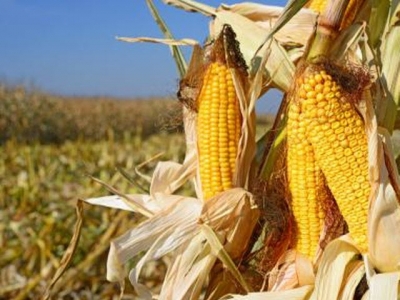Scientists are teaching plants to use insects as a natural defence

Scientists recommend rebreeding modern domesticated crops with wild relatives to restore their key defences against pests. This includes the ability to attract and reward other insects that are the natural enemies of these pests, so-called plant ‘bodyguards’ (Photo: Shutterstock).
Rebreeding crops to attract and reward certain insects will boost their natural defences and cut the use of pesticides, suggest scientists.
According to EU directives, farmers need to reduce their use of pesticides and switch to more integrative methods of pest management. But how will they achieve this?
Agricultural researchers writing in the open-access scientific journal Trends in Plant Science have some answers.
“Our domesticated crops have lost their natural defences against common pests, but we think it’s possible to restore these traits by rebreeding,” says lead-author Associate Professor Johan Stenberg, from the Department of Plant Protection Biology, at the Swedish University of Agricultural Sciences.
We should reintroduce two types of defence
Two key defence traits have been lost in crops over the years: the ability to both attract and reward their bodyguards, says Stenberg.
“Crops used to be able to emit volatile organic compounds or ‘perfumes’, that attracted the pests’ natural enemies--like sending out an SOS signal to their ‘bodyguards’. But they also rewarded these bodyguards by, for example, producing extrafloral nectar for them to consume,” he says.
These two traits form the key natural defences and allow plants to protect themselves indirectly from pests by both attracting and rewarding the pests’ natural enemies, says Stenberg.
“The two traits need to work together. Without the reward, predators quickly learn that it’s a false alarm and stop responding to these scents,” he says.
Stenberg and his colleagues have trawled the literature to find out which crops would be suitable contenders for rebreeding programs.
He suggests that breeding to restore the natural defences could work well with crops that have wild relatives and that retain these indirect defence mechanisms.
“Examples where these genetic resources remains in the wild include legumes, peaches, cotton, maize, salix, and many others,” he says.
Cross-breeding with wild relatives
As long as the crops still have a wild relative, there is a chance that plant breeders can reintroduce these lost traits.
But Stenberg emphasises that it may be difficult to select the correct genes needed to restore them.
“One problem is that these two traits are complex and controlled by several genes. So it’s possible to achieve, but it’s quite a complex process. Modern genomic techniques could be the best option,” he says.
New resistant breeds are currently underdevelopment but it will be some years before they hit the market.
What are the options for Organic Farmers?
Organic farmers can also benefit from a modified version of these natural defences, by intercropping with plants that retain these defence features.
“One technique known as push-pull, could be an option for organic farmers. It can be implemented right away and is compatible with the principles of organic farming,” says Stenberg.
In push-pull, farmers plant specific plants within the plantation that are repellent to pest insects and ‘push’ them away, and other plants around the plantation that attracts pest insects, pulling them away from the crop.
“In fact, this is already being done to a certain extent, but could be expanded,” he says.
Per Kølster, chairman of The Danish Organic Farmers Association, agrees.
“Some farmers may be using these techniques already in small plantations, but I don’t know that it is working very efficiently,” he says.
“But in orchards this principle is already very important as an effective means to prevent pests for crops like apples and berries,” he says.
Kølster says that an integrated approach is necessary, using both natural plant deterrents and physical barriers, such as netting, to keep larger pests at bay.
Related news
 Southern farmers upgrade cultivation, production methods
Southern farmers upgrade cultivation, production methods Thanks to the application of modern technologies in production and investment in machinery and equipment, farmers in the south have enjoyed greater economic
 2018 export revenue from cultivated products targeted at $21bn
2018 export revenue from cultivated products targeted at $21bn Vietnam earned a record $3.45 billion from fruit and vegetable exports in 2017, a year-on-year increase of 40.5 per cent.
 Vegetables, fruits gain trade surplus of $452 million
Vegetables, fruits gain trade surplus of $452 million Top ten import markets of Vietnam include China, the US, Japan, Thailand, South Korea, Malaysia, Taiwan (China) and Russia.